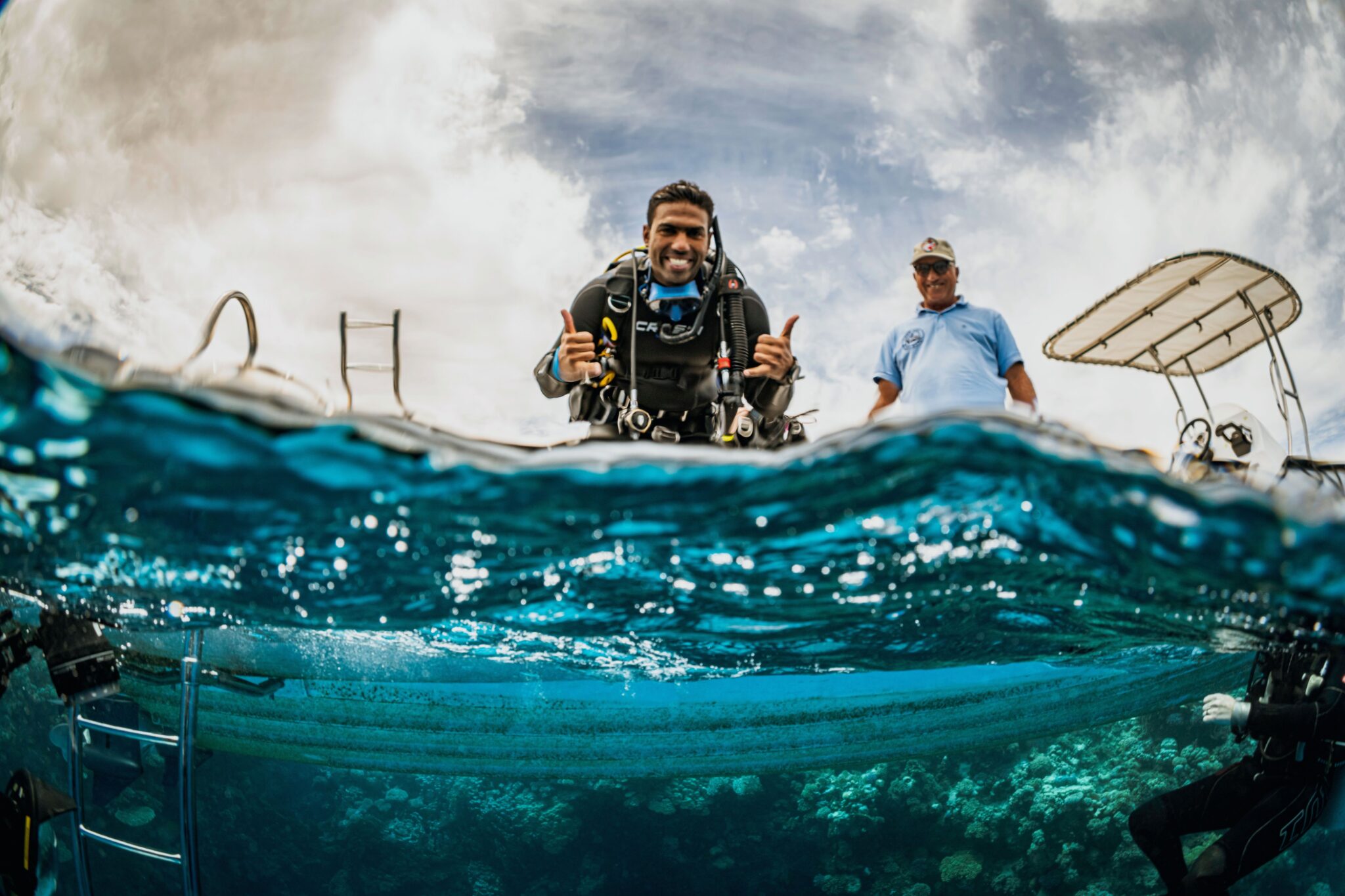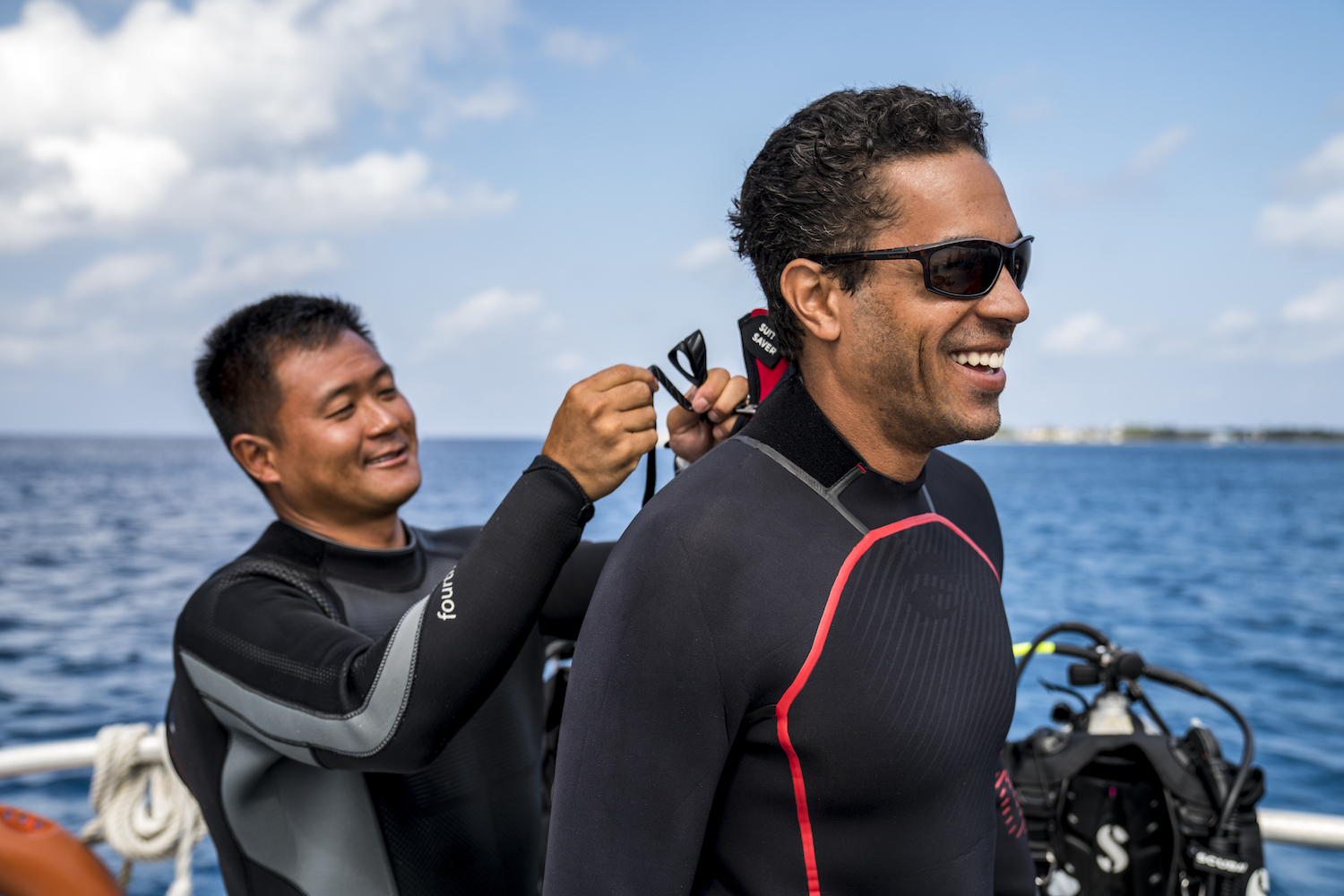Are you thinking about investing in a wetsuit but are not sure whether to purchase a scuba diving wetsuit or a surfing wetsuit? Do you take part in both activities and are wondering if you can buy a thermal protection suit that’s multipurpose? In this blog, we aim to set out the key differences between wetsuits for diving and wetsuits for surfing and what makes them specific to each activity.
Surfing and scuba diving wetsuits each have different characteristics and features that make them ideal for their respective activities. Below, we’ll dive deeper into the differences between surfing and scuba diving wetsuits.
Surfers are extremely active on the surface of the water – they are not completely immersed in it. The level of activity and exertion means that surfers will stay warmer for longer, so surfing wetsuits are thinner than scuba diving wetsuits. Surfers also need to be able to move all parts of their bodies with ease, so as well as being thinner, the material used contains a much higher level of elasticity.
Surfing wetsuits have additional features to withstand the wear and tear of surfing, including knee and elbow pads and, in some cases, a rubber layer over the chest area. These features are to protect the wetsuit from damage caused by contact with the surfboard while paddling.

Your body can lose warmth up to 25 times faster underwater, so scuba diving wetsuits are thicker and provide greater insulation than surfing wetsuits, which are worn at the surface. But, it’s not only temperature that changes underwater, so does pressure. Diving wetsuits are specifically designed to handle pressure, so they do not compress as much as a surfer’s suit would in the same circumstances.
Scuba diving wetsuits are in constant contact with heavy duty gear, including weights and weight belts, backplates, buckles and BCDs, so the wetsuit material also needs to be heavy duty. For this reason, scuba diving wetsuits are made from sturdier and denser material.

In short, it’s not recommended to use a surfing wetsuit for scuba diving, because:
The thinner material would not provide a scuba diver with adequate thermal protection underwater. A surfing suit is not designed to withstand the changes of pressure that come with depth. Surfing wetsuits are not designed to cope with the wear and tear caused by scuba gear. Surfing suits do not provide additional buoyancy.Again, this is not recommended for the following reasons:
The thicker and denser material of a scuba diving wetsuit would restrict and hinder the movement of the surfer. The additional effort required to move, combined with the thicker material could result in the surfer overheating or becoming exhausted. Scuba diving wetsuits do not have appropriate pads to withstand friction with the surfboard while paddling.
Always choose the right wetsuit for the activity you are intending to pursue. Once you’ve chosen a surfing, a scuba diving or a freediving wetsuit (more on those here), you’ll then need to take into account a number of considerations, including water temperature, additional features you’ll need, such as seals and zips, style, comfort and fit.
For scuba divers, having zips on the ankles and wrists makes donning the suit easier, and choosing a suit with rubber wrist, ankle and neck seals will add to thermal protection.
Wetsuits for diving and surfing are no longer unisex. For women, it’s recommended to choose a women’s suit, which is designed to better fit the female form.
If possible, it’s always better to visit your local surf shop or PADI Dive Center in person, so that you can try on wetsuits prior to purchasing, rather than buying online. Don’t be afraid to try on a number of wetsuits so that you can compare different styles from a variety of manufacturers.
When it comes to fit, wetsuits are designed to be tight fitting to prevent water from flowing in and out of the suit. The suit should not be tight but not so tight that it restricts your movement or breathing. Take into account that when trying on a dry wetsuit, it will give slightly when you are in the water. If you are unsure if the fit is correct, ask for the advice of the staff in the shop.
Prepare yourself for a diving revelation! Learning to dive is the challenge you’ve been looking for. Not only will it help you to explore the underwater world, it will also help you disconnect from your screens and reconnect with nature and your mental well being. Start your PADI Open Water Diver course online today!
Share This